For many international travelers, a trip to Japan represents a once-in-a-lifetime dream. Japan, and Tokyo in particular, are often high on lists of must-see global destinations. It’s important to make informed decisions when traveling, and a key part of any travel plan is airport selection and use.
Thankfully, Japanese airports are extremely clean, orderly, and safe. It’s typically fast and painless to navigate ticket booths, drop off bags, collect bags at baggage claim, and pass through immigration and customs. While support for foreign languages is somewhat limited, signage is almost always offered in English, and there are tourist information centers that can help supplement the rest of travelers’ needs. Beyond that, each of Japan’s major airports offer plenty of food and drink options, duty-free selections, and even special services like in-airport hotels.
This guide offers an overview of four of Japan’s international airports: Haneda (HND) and Narita (NRT) in the Greater Tokyo Area, Kansai International Airport (KIX) near Osaka, west of Tokyo, and New Chitose (CTS) near Sapporo, Japan’s northernmost major city.
Much of the information in this guide can be used for each airport, such as information regarding connecting to local public transportation options. PASMO cards or SUICA cards, for instance (rechargeable public transportation cards), are purchasable at airports and usable across all of Japan via the JR railway system that connects major cities, as well as many local subways and buses. Other information, such as terminal layouts and facilities, are specific to individual airports.
This guide is intended to provide a summary of critical information for each of the aforementioned airports. If you require any further, specific information, feel free to consult each airport’s website or download any appropriate travel guide that you wish.
Haneda Airport (HND)
Haneda airport (羽田空港) is one of two international airports within the Greater Tokyo Area (the other being Narita). It is more centrally located to downtown Tokyo districts than Narita and is generally regarded as easier to travel from and to when visiting Tokyo. However, Haneda has fewer international flights than Narita, although major Japanese airlines JAL and ANA offer connections from a variety of global locations. Recently, more international slots have been opened for flights to and from Haneda, so this situation could be changing.
[the_ad id=”100198″]
Terminals 1 & 2 are dedicated to domestic flights (JAL is located in Terminal 1, and ANA is located in Terminal 2), while Terminal 3, the newest terminal, handles international flights. There are free shuttle buses available to take you between terminals.
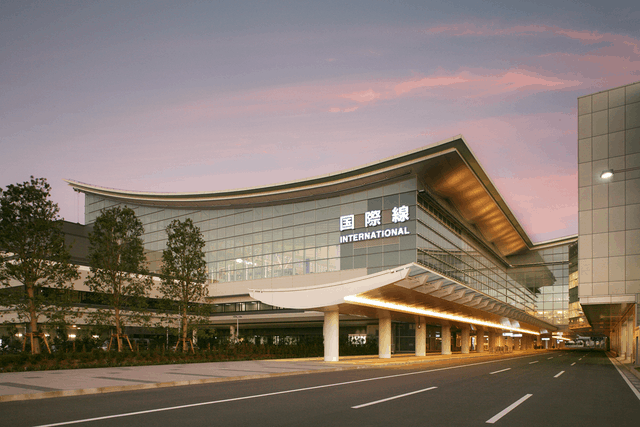
Transportation Option
Transportation connecting to and from Haneda boils down to train, bus, and car.
There are numerous local buses that connect Haneda to well-known locations around Tokyo such as Asakusa (浅草), Roppongi (六本木), Akihabara (秋葉原), or Shibuya (渋谷). The fastest and most well-regarded bus option is the Shinjuku Expressway Bus, which drops passengers off in the heart of Shinjuku (新宿). Once there, you’ll have to switch to a local train or subway and use your PASMO or SUICA card to travel to your final destination. The same route can be used to get back to Haneda.
As far as trains as concerned, you can take the Keikyu Line connecting Haneda to Shinagawa station (品川駅), a transportation hub along the Yamanote train line that connects to the Shinkansen (bullet train) if you’re traveling outside of Tokyo. Or, you take the Tokyo Monorail to Hamamatsucho station (浜松町駅), also along the Yamanote line.
Alternatively, you can take a flat-rate taxi to various areas throughout Tokyo, or, if you have an international driver’s permit (IDP), rent a car and navigate by yourself. For certain countries, you might also be eligible to drive in Japan with a Japanese translation of your license from home. Consult the Japan Automobile Federation website for more information.
Immigration and Customs Process
Unless there’s a particularly large amount of travelers disembarking at the same time, immigration and customs in Haneda are fast and easy to navigate. There are guides at each junction to ferry travelers to their proper line (Japanese citizens vs. international citizens). No matter what time you arrive, there will always be an immigration officer on hand to facilitate your entry into the country.
Customs is on the other side of immigration, past baggage claim. Customs officials conduct random checks of bags and duty-free goods, but under normal circumstances, entry should be no more complicated than handing the customs official your declaration card and answering a couple mandatory questions.
Airport Maps
Here are links to maps of Haneda’s terminals:
Food and Shopping Overview
Haneda has a bevy of food options – Western food, Japanese food, cafes, bars, and fast food – several available 24-hours (with a smaller selection late at night). These options are located at each stage of your journey through the airport: before check-in, after security, and after customs. Each terminal has different restaurants, but there is a comparably wide selection of choices available across all terminals.
Similarly, Haneda has a full array of shops available at each point in the airport, including clothing stores, souvenir and knickknack shops, food and grocery stores, drugstores, convenience stores, bookstores, and duty-free goods such as perfume and alcohol. There shouldn’t be any trouble finding what you need either for yourself or for someone else, even after hours or early in the morning.
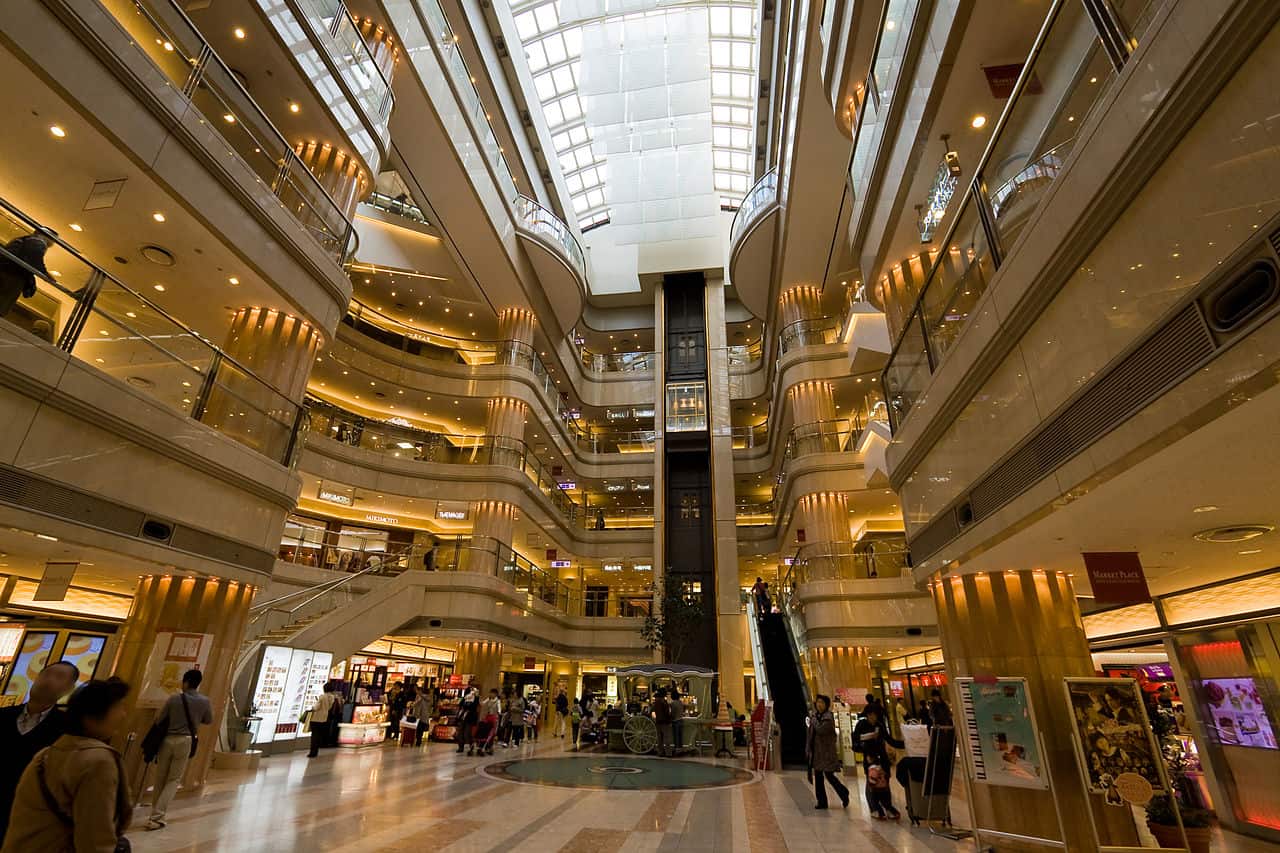
Money Exchange and ATMs
Money exchange and ATMs are accessible on the side of customs once you’ve officially entered the country, along with convenience stores and a sampling of shops. They are also available if you’re departing from Haneda, in the departures terminal. Some ATMs, particularly Seven Bank (7-Eleven) and JP Bank, work with international cards and dispense money in Japanese yen. In general, it’s recommended that travelers withdraw and keep a decent amount of cash, as many stores in Japan do not accept credit cards, and it’s also safe to carry around large sums of money. Even keeping sums as large as ¥100,000 or more is not unheard of for Japanese people, let alone travelers who may often need to make large, travel-related purchases.
Money exchange in Japanese airports is more of a complex affair than travelers are used to in other countries. There are forms available that must be filled out, stating the precise amount of money being exchanged, the currency being exchanged, as well as personal information. Please note that different currencies require separate forms. Because of the strict nature of money handling in Japan, expect to line up with other travelers and wait for this process to finish.
Be sure, therefore, to exchange your money before you leave the airport. Money exchange opportunities are often scarce outside of Japanese airports, or at the very least even more cumbersome (if you try to exchange money at a bank, for instance, where it’s unlikely they will accept or carry a wide range of foreign currencies, if any.)
Connectivity Options
Kiosks and vending machines after customs sell SIM cards with varying amounts of data. Simply pay the proper amount (cash or sometimes credit), insert the SIM card into your cell phone, and follow the activation instructions that come with the card. These instructions are typically offered in multiple languages, including English.
“Pocket WiFi” is another option commonly used by travelers: a small WiFi box that provides internet access for multiple people, making it the ideal choice for a group of individuals planning on traveling together. The easiest way to get a pocket WiFi is to reserve one online through a company like Voyagin. This way, you can do the transaction in English and minimize the time you need to spend at the airport on arrival. Otherwise, getting a pocket WiFi requires going to a kiosk and signing a short-term contract that uses a credit card for the purchase (in case the pocket WiFi is lost or damaged). There are multiple data packages available, much like SIM cards, although unlimited data is typically an affordable option. Data packages can also be domestic or international (if you intend to travel out of Japan and then back, over the duration of your entire trip).
Reserve your high speed portable pocket wifi online with Rakuten Travel
Be aware that pocket WiFi must often be returned directly back to the airport where they were bought. This can be done when you return to the airport to depart from Japan. Alternatively, they can sometimes be mailed (the seller will provide an addressed envelope) form any post box location across Japan. You should discuss these options when renting a pocket WiFi to ensure you agree to whatever option works best for you. Additionally, some pocket WiFi are not available for same-day pickup and require reserving them a day or two ahead of time.
Some vendors such as G-Call also offer entire phones for rental while in Japan. These are flip phones (not smart phones) with text-messaging and phone call capabilities, as well as a data package for internet usage. The process for renting an entire phone is similar to pocket WiFi, and requires a credit card.
G-Call is the best all-around option for renting an entire phone while in Japan, because of their relative flexibility. Fill out an application online, pick up the phone at a designated counter within the airport of your choice (Haneda, Narita, Kansai International, New Chitose, or many others), and then return the phone at the end of your travels. However, only Haneda and Narita allow returns of phones at the airport themselves; for all other airports and locations phones must be returned through the mail. G-Call also delivers phones to any home address around Japan for an additional ¥1,000 (less than $10 USD).
Here is the link to renting a phone online through G-Call.
Baggage Delivery
Baggage delivery services are available at Haneda for those who want to lighten their load on the way to their hotel (or back to the airport).
When leaving Haneda this service is available in the departures lobby of all three Haneda terminals at the JAL Baggage Service Counter. You must hand over your bags from 8:30 am to 2:00 pm to ensure they will be delivered the same day (after 7:00 pm at their destination). Otherwise, they will be delivered the following day. Each item must be 50kg or less, and there are other specifications such as being unable to transport fragile goods. A similar service is provided by Yamato, but baggage for same-day delivery has to be checked in at the counter before 12:30 pm.
Baggage can be delivered to Haneda, and also varies from company to company. GPA, Yamato, once again, is perhaps the most flexible option. Simply bring your bag to a drop-off location within Tokyo, no reservation required. This can be done from most hotels and convenience stores.
Click here for the baggage delivery reservation form and a full list of rates (to multiple airports).
Check here for a full list of hotels that offer baggage delivery services to Haneda.
[the_ad id=”99896″]
Special Services Onsite
Haneda has a full range of special services available for customers, including massages, lounges, hotels, as well as barrier-free access (including toilets) and amenities available for people with young children, including stroller rentals and daycare facilities.
Full medical clinics are available in each terminal. The clinic in Terminal 1 closes by 5:00 pm, but the Terminals 2 and 3 clinics close at 10:00 pm and 11:00 pm, respectively.
There are multiple hotels in Haneda, in each terminal. Reservations are recommended to avoid being stranded, but not required. Terminal 3 also has a separate, extremely convenient hotel that can be used solely by people who are transiting and have long layovers.
Narita Airport (NRT)
Narita airport (成田国際空港) is Tokyo’s second international airport along with Haneda, located in Chiba Prefecture about 80 km away from downtown Tokyo districts such as Shinjuku. Its main drawback is its distance from Tokyo compared to Haneda. Transportation to and from the airport is more expensive and it will likely take over an hour door-to-door. However, Narita is also Tokyo’s main international arrival and departure location, and flights to and from Narita are often less expensive than Haneda.
Narita is separated into three terminals, each one serving domestic and international flights. Specific carriers operate out of specific terminals, although these terminals are subject to change, so it’s a good idea to double check your terminal before arriving and departing.
There’s a free shuttle bus that travels between each terminal, and the train lines used for travel between Narita and the rest of Japan can also be re-boarded to move between terminals if necessary.
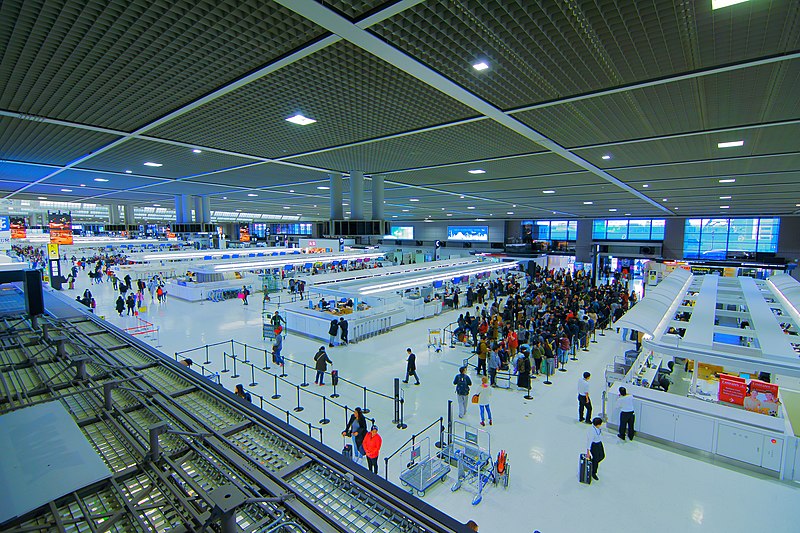
Immigration and Customs Process
Much like Haneda, immigration and customs in Narita is exceedingly simple and easy. Immigation is separated into Japanese and non-Japanese lines, and attended to by employees who will guide you to the right spot. There is always an immigration officer on hand, and the entire immigration-customs process can sometimes be as quick as 10 minutes or less if there aren’t a lot of other travelers arriving at the same time.
Customs is on the other side of immigration, past baggage claim. Simply line up, hand them your declaration card, and answer a couple questions if necessary. Random bag checks are sometimes conducted, but this is rare and shouldn’t hold you up if you’re on a strict schedule.
Airport Maps
Here are links to maps of Narita’s terminals:
This link contains PDFs and guides for each of Narita’s terminals:
Narita Maps and Guides (All Terminals)
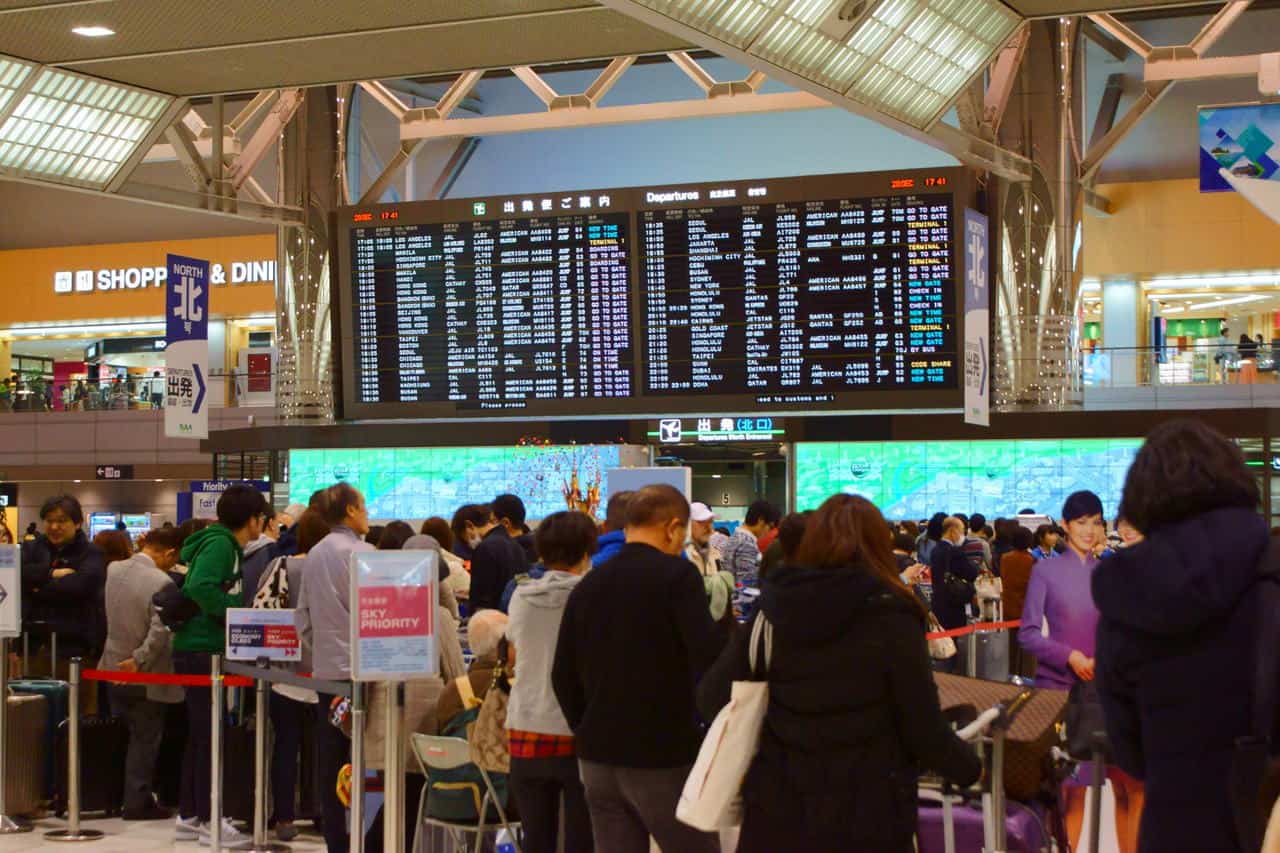
Food and Shopping Overview
Narita has copious shops and restaurants in each terminal spanning all the way from departures to gates, and also on the other side of customs in arrivals. Shopping options includes clothing, Japanese cultural goods like figurines and fans, cosmetics and medicine, sourvenirs, convenience store sundries, jewelry, and electrical goods.
There are a lot of food options spread throughout Narita, including Japanese food, Chinese food, Western cuisine, a lot of cafes and coffee shops, and duty-free shops selling alcohol and perfume. Narita, in true international spirit, has gone out of its way to incorporate an impressive group of vegetarian and halal food offerings into its cuisine, as well, which is a huge boon for travelers with dietary restrictions.
Money Exchange and ATMs
There are quite a number of ATMs and money exchange locations throughout Narita in all terminals in both departures and arrivals.
Money exchange and ATMs are accessible on the side of customs once you’ve officially entered the country. Some ATMs, particularly Seven Bank (7-Eleven) and JP Bank, work with international cards and dispense money in Japanese yen. In general, it’s recommended that travelers withdraw and keep a decent amount of cash, as many stores in Japan do not accept credit cards, and it’s also safe to carry around large sums of money. Even keeping sums as large as ¥100,000 or more is not unheard of for Japanese people, let alone travelers who may often need to make large, travel-related purchases.
Money exchange in Japanese airports is more of a complex affair than travelers are used to in other countries. There are forms available that must be filled out, stating the precise amount of money being exchanged, the currency being exchanged, as well as personal information. Please note that different currencies require separate forms. Because of the strict nature of money handling in Japan, expect to line up with other travelers and wait for this process to finish.
It is strongly recommended to exchange your money before you leave the airport. Money exchange opportunities are often scarce outside of Japanese airports, or at the very least even more cumbersome, even at major banks.
Connectivity Options
Kiosks and vending machines after customs sell SIM cards with varying amounts of data. Simply pay the proper amount (cash or sometimes credit), insert the SIM card into your cell phone, and follow the activation instructions that come with the card. These instructions are typically offered in multiple languages, including English.
“Pocket WiFi” is another option commonly used by travelers: a small WiFi box that provides internet access for multiple people, making it the ideal choice for a group of individuals planning on traveling together. The easiest way to get a pocket WiFi is to reserve one online through a company like Voyagin. This way, you can do the transaction in English and minimize the time you need to spend at the airport on arrival. Otherwise, getting a pocket WiFi requires going to a kiosk and signing a short-term contract that uses a credit card for the purchase (in case the pocket WiFi is lost or damaged). There are multiple data packages available, much like SIM cards, although unlimited data is typically an affordable option. Data packages can also be domestic or international (if you intend to travel out of Japan and then back, over the duration of your entire trip).
Be aware that pocket WiFi must often be returned directly back to the airport where they were bought. This can be done when you return to the airport to depart from Japan. Alternatively, they can sometimes be mailed (the seller will provide an addressed envelope) form any post box location across Japan. You should discuss these options when renting a pocket WiFi to ensure you agree to whatever option works best for you. Additionally, some pocket WiFi are not available for same-day pickup and require reserving them a day or two ahead of time.
Some vendors such as G-Call also offer entire phones for rental while in Japan. These are flip phones (not smart phones) with text-messaging and phone call capabilities, as well as a data package for internet usage. The process for renting an entire phone is similar to pocket Wifi, and requires a credit card.
G-Call is the best all-around option for renting an entire phone while in Japan, because of their relative flexibility. Fill out an application online, pick up the phone at a designated counter within the airport of your choice (Haneda, Narita, Kansai International, New Chitose, or many others), and then return the phone at the end of your travels. However, only Haneda and Narita allow returns of phones at the airport themselves; for all other airports and locations phones must be returned through the mail. G-Call also delivers phones to any home address around Japan for an additional ¥1,000 (less than $10 USD).
Here is the link to renting a phone online through G-Call.
Baggage Delivery
Baggage delivery services are available at Narita, much like Haneda, for travelers who want to send their bags ahead to their hotels, or who want to send their bags back to the airport.
There are numerous options available for baggage delivery across the arrivals and departures areas of each terminal, from a variety of companies (Yamato, JAL, ABC). All of them are available for inquiries and reservations from around 6-7:00am until midnight, but otherwise differ in policies regarding drop-offs and deilveries. Some companies, such as Yamato are more flexible than others, and can deliver baggage to any address across Japan.
Check the following list to browse options that work best for you.
Baggage can be delivered to Narita, and also varies from company to company. GPA, Yamato, once again, is perhaps the most flexible option. Simply bring your bag to a drop-off location within Tokyo, no reservation required. This can be done from most hotels and convenience stores.
Transportation Options
Inbound and outbound transportation for Narita can be challenging to navigate, but boils down to train, bus, car rental, and taxis much like the other airports in this list.
There are a number of train lines that connect to Narita, and each one departs from a different set of locations around Tokyo. At that point, it’ll be necessary to switch lines to connect to another local train or subway (and use your PASMO or SUICA card) to arrive at your final destination.
The JR N’EX Narita Express runs between Narita and several major stations on Tokyo’s Yamanote Line including Tokyo station (東京駅), Ikebukuro (池袋), Shinjuku (新宿), and Shinagawa (品川). The departures are about 30 minutes apart and because this is a JR operated train, you can use your activated Japan Rail Pass to ride it. Because the Narita Express stops at many areas that tourists commonly stay in, it is the most popular option.
The most luxurious (onboard WiFi and power outlets), and therefore expensive Narita train is the Keisei Skyliner. The Skyliner requires purchase of a separate ticket that must be used in conjunction with your PASMO or SUICA card when boarding and departing the train. The Keisei Skyliner has a separate ticket booth past customs when exiting Narita, and also has booths at each of its connecting locations within Tokyo (e.g., Ueno, Nippori). It is important to note that the Japan Rail Pass does not cover the Keisei Skyliner.
There are numerous buses that you can use when traveling from and to Narita, as well, many of which are local. The Narita Airport Shuttle, run by Willer, is the cheapest option, as little as 1,000 yen if you book more than 24 hours in advance. The shuttle connects to Osaki station (大崎駅), which is on the JR Yamanote line near Shinagawa (品川), mentioned previously in this article as connecting to Haneda via the Keikyu line.
Another popular bus option is the Airport Limousine Bus which runs between Narita and many major hotels and transportation hubs in Tokyo. It costs a bit more than the Willer Airport Shuttle but it can get you much closer to your intended destination, or even door-to-door.
Taxis are available to take you directly into Tokyo if you want, but because of the distance they be quite expensive and this is generally not recommended. Rental cars are also available for those who have international driver’s permits (IDP). For certain countries, you might also be eligible to drive in Japan with a Japanese translation of your license from home. Consult the Japan Automobile Federation website for more information.
Special Services Onsite
Because Narita is geared towards international travel, it has a couple special services that are quite convenient for those traveling extremely long distances, staying overnight, or even just having a long layover.
Terminals 1 and 2 have day rooms that can be used for napping, hanging out, or even just having a quick shower before your flight. The procedure is quite easy (pay, get a number, wait your turn), and no reservation is required. Terminal 2 even has a capsule hotel ready for travelers who want to experience one of Japan’s more iconic accommodations, available 24 hours and for up to 9 hours of use.
Additionally, Narita has several art galleries like the NAA Art Gallery in Terminal 1, and Japanese culture-themed shops like the Kabuki Experience Gallery & Shop, also in Terminal 1. The airport is full of art deco and paintings that help to beautify the environment and convey a sense of Japan to international travelers.
Narita has the usual array of general use lounges and airline-specific lounges, as well.
Kansai International Airport (KIX)
Kansai International (関西国際空港) is the main airport in service to Osaka city (大阪市) and Osaka Prefecture (大阪府) in the Kansai area of Japan west of Tokyo. It’s located on a man-made island about 40km away from Osaka city.
The airport is separated into two terminals: domestic (Terminal 1) and international (Terminal 2), connected by a driver-less shuttle that comes every 2 minutes (and takes 7-9 minutes to travel between terminals). The airport has a reputation for excellent customer service, particularly when it comes to handling baggage and providing baggage delivery services.
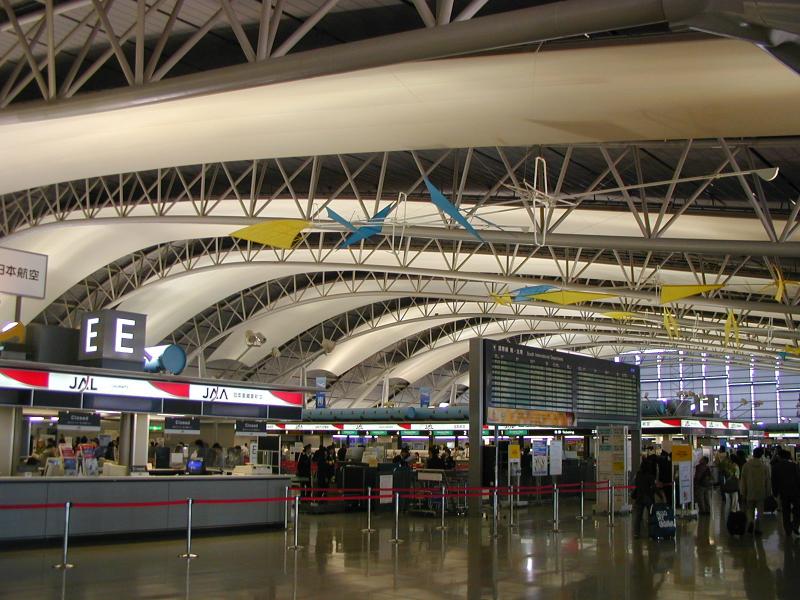
Immigration and Customs Process
Much like other Japanese airports, immigration in Kansai International is smooth and painless. Japanese citizens can proceed through automatic gates, and foreign nationals can follow signs to an immigration officer, hand over their immigration card, and enter the country with little trouble. Customs, as usual, is on the other side of baggage claim once you pass through immigration. Customs officials retain the right to check bags if they wish.
Airport Maps
Here are links to maps of Kansai airport and its terminals:
Food and Shopping Overview
Kansai International has an extensive array of shopping items, including jewelry, books, pharmaceuticals, kids’ goods, souvenirs, beauty products, travel items such as suitcases, and electronics. These stores are located across both its terminals, before and after security in departures, and some stores after customs in arrivals.
When it comes to food, Kansai International boasts an extensive selection of items, including Japanese, Chinese, Western cafes, bars, fast food, and a food court with a variety of additional offerings. A good number of these options are available late night or early morning, which is good news for international travelers.
Money Exchange and ATMs
Much like the other airports in this list, Kansai International has many ATMs and money exchange locations throughout the entire airport.
Money exchange and ATMs are accessible on the side of customs once you’ve officially entered the country. Some ATMs, particularly Seven Bank (7-Eleven) and JP Bank, work with international cards and dispense money in Japanese yen. In general, it’s recommended that travelers withdraw and keep a decent amount of cash, as many stores in Japan do not accept credit cards, and it’s also relatively safe to carry around large sums of money if you use common sense.
Money exchange in Japanese airports is more of a complex affair than travelers are used to in other countries. There are forms available that must be filled out, stating the precise amount of money being exchanged, the currency being exchanged, as well as personal information. Please note that different currencies require separate forms. Because of the strict nature of money handling in Japan, expect to line up with other travelers and wait for this process to finish.
It is strongly recommended to exchange your money before you leave the airport. Money exchange opportunities are often scarce outside of Japanese airports, or at the very least even more cumbersome, even at major banks.
Connectivity Options
Kiosks and vending machines after customs sell SIM cards with varying amounts of data. Simply pay the proper amount (cash or sometimes credit), insert the SIM card into your cell phone, and follow the activation instructions that come with the card. These instructions are typically offered in multiple languages, including English.
“Pocket WiFi” is another option commonly used by travelers: a small WiFi box that provides internet access for multiple people, making it the ideal choice for a group of individuals planning on traveling together. The easiest way to get a pocket WiFi is to reserve one online through a company like Voyagin. This way, you can do the transaction in English and minimize the time you need to spend at the airport on arrival. Otherwise, getting a pocket WiFi requires going to a kiosk and signing a short-term contract that uses a credit card for the purchase (in case the pocket WiFi is lost or damaged). There are multiple data packages available, much like SIM cards, although unlimited data is typically an affordable option. Data packages can also be domestic or international (if you intend to travel out of Japan and then back, over the duration of your entire trip).
Be aware that pocket WiFi must often be returned directly back to the airport where they were bought. This can be done when you return to the airport to depart from Japan. Alternatively, they can sometimes be mailed (the seller will provide an addressed envelope) form any post box location across Japan. You should discuss these options when renting a pocket WiFi to ensure you agree to whatever option works best for you. Additionally, some pocket WiFi are not available for same-day pickup and require reserving them a day or two ahead of time.
Some vendors such as G-Call also offer entire phones for rental while in Japan. These are flip phones (not smart phones) with text-messaging and phone call capabilities, as well as a data package for internet usage. The process for renting an entire phone is similar to pocket WiFi, and requires a credit card.
G-Call is the best all-around option for renting an entire phone while in Japan, because of their relative flexibility. Fill out an application online, pick up the phone at a designated counter within the airport of your choice (Haneda, Narita, Kansai International, New Chitose, or many others), and then return the phone at the end of your travels. However, only Haneda and Narita allow returns of phones at the airport themselves; for all other airports and locations phones must be returned through the mail. G-Call also delivers phones to any home address around Japan for an additional ¥1,000 (less than $10 USD).
Here is the link to renting a phone online through G-Call.
Baggage Delivery
Kansai International has baggage delivery options identical to Haneda, centered around JAL delivery services. There is also a regional delivery service called Kansai Airport Baggage Service with hours and reservation policies similar to JAL’s. There are some additional package delivery options offering by Lawson, seven eleven, and the post office, but those are for smaller parcels and not large-sized luggage.
Transportation Options
Because Kansai International is located on an island, there are limited options for transportion from and to the airport. In some ways, this makes travel easier, but in other ways, it necessitates advance planning.
The two shuttles available from the airport – Yasaka Kanku shuttle and Skygateshuttle – can drop you off anywhere you want, door-to-door, and can be shared with other passengers, but necessitate booking at least two days in advance by phone.
The Airport Limousine Bus does not require advance ticketing, and drops passengers off at specific destinations within Kansai (Osaka, Kyoto, Nara, Hyogo, Wakayama) and surrounding areas (Okayama and Kagawa, Shikoku). There is also a high-speed ferry that travels to Kobe Airport (UKB) across Osaka Bay in 30 minutes if you wish to then connect to further transportation options.
There are numerous trains that run to and from Kansai International, as well, and many of them are JR trains, so it’s alright to use your Japan Rail Pass if you have one activated. Trains travel to, and depart from, nearby stations such Osaka (大阪駅), Kyoto (京都駅), Shin-Osaka (新大阪駅), Maibara (米原駅), Wakayama (和歌山駅), and Hineno (日根野駅). The easiest train to use is the Airport Express HARUKA train, but bear in mind that the train only goes to Terminal 1, and you’ll have to take the shuttle from there to Terminal 2.
The full train schedule can be found here.
Finally, rental cars are available for those who wish to drive themselves and brought a valid International Driver’s Permit (IDP) with them. For certain countries, you might also be eligible to drive in Japan with a Japanese translation of your license from home. Consult the Japan Automobile Federation website for more information.
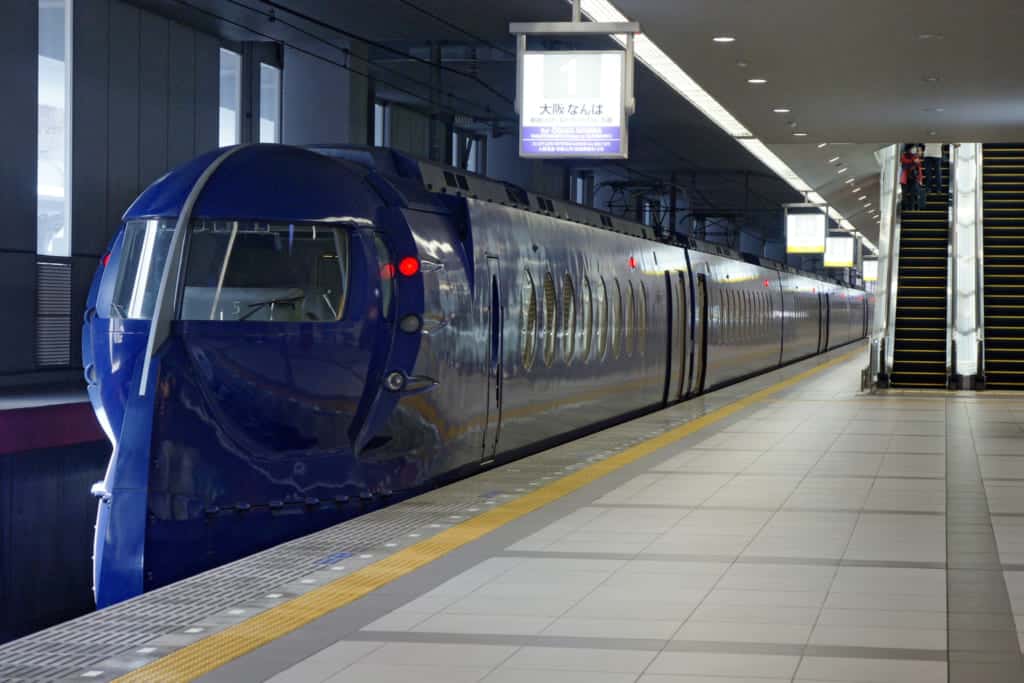
Special Services Onsite
Kansai International doesn’t have a lot in the way of unique onsite services, but it has a solid range of standard, yet high-quality facilities. There is a clinic open from 9:00am to 5:00pm for medical concerns, a dentist open from 10:30am to 7:00pm (Closed on Thu, Sun & Public Holidays), a massage parlor, coin-operated shower rooms, lounges, a prayer room, a pet hotel, and a full retinue of barrier-free access for those in wheelchairs or otherwise in need.
Most prominently, though, is Kansai International’s business options. The airport has multiple conference rooms, a business lounge, a business center with copy machine, fax machine, etc., and VIP rooms available for rental.
There is also a hotel connected to the airport, available 24 hours with or without reservations.
New Chitose Airport (CTS)
In comparison to its fellow airports, New Chitose (新千歳空港, Shin-Chitose kūkō) is a smaller, but still heavily traveled airport. It is the only international airport in Hokkaido (北海道), and the main airport within a short distance from the Sapporo (札幌) metropolitan area. The airport is known for its friendly atmosphere, dense food options, and unique set of facilities.
New Chitose is separated into two terminals – domestic and international – connected by a sky ramp that contains shops. Because of this layout, the entire airport is navigable on foot, and certain facilities offered in one terminal may be easily accessible from the other. Also note that New Chitose limits the number of flights that run between 10pm and 7am, so there may be more constrained ticketing options available during that time.
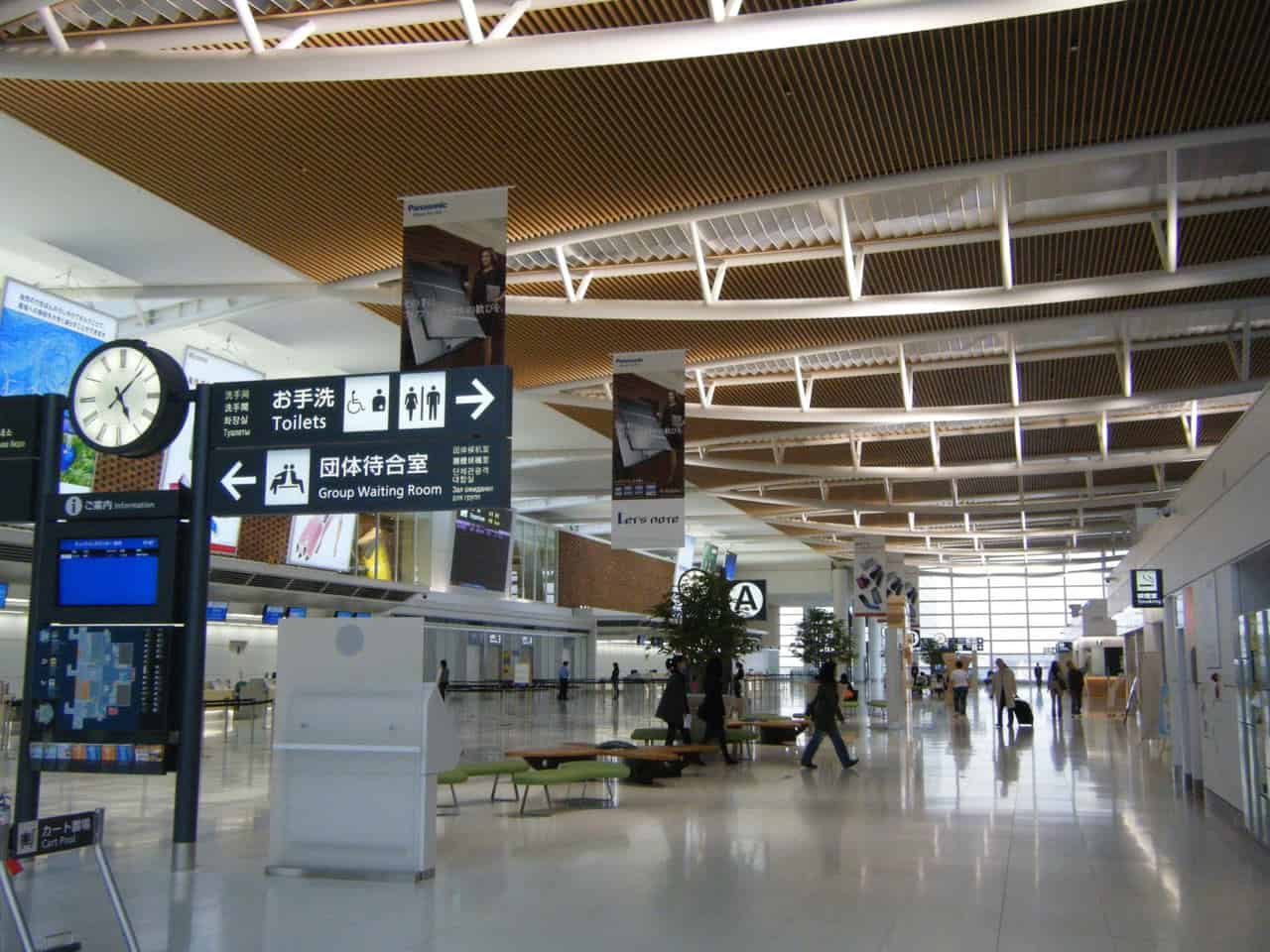
Immigration and Customs Process
True to Hokkaido’s reputation, New Chitose tends to be a relaxed and easygoing place, in addition to being efficiently operated. Even when the airport is busy, immigration tends to move quickly. Lines are separated into Japanese and foreign nationals, as usual, as airport attendants are on hand to help guide travelers to their correct spot. Customs tends to proceed with minimal troubles, as well, so you can expect your timetables to remain uninterrupted by airport procedure.
Airport Maps
Here are links to New Chitose different levels:
- B1 Map (Both Terminals)
- 1F Map (Both Terminals)
- 2F Map (Both Terminals)
- 3F Map (Both Terminals)
- 4F Map (Both Terminals)
Food and Shopping Overview
Because of its smaller size, New Chitose doesn’t have an overabundance of shopping choices like the other airports on this list, but it still has a full range of souvenir, clothing, convenience store, and Hokkaido-specific memorabilia shops.
New Chitose’s food options, though, are fairly impressive. There a food court with a variety of Japanese food, Western food, bars, cafes, as well as a strip of ramen shops called Hokkaido noodle hall, and of course restaurants serving Hokkaido specialties. The airport is somewhat renowned for its food, in fact, to the point where some travelers deliberately spend time in the airport as a part of their vacation (along with the airport’s more unique facilities).
Money Exchange and ATMs
Much like the other airports in this list, New Chitose has plenty of ATMs and money exchange locations scattered throughout both terminals.
Money exchange and ATMs are accessible on the side of customs once you’ve officially entered the country. Some ATMs, particularly Seven Bank (7-Eleven) and JP Bank, work with international cards and dispense money in Japanese yen. In general, it’s recommended that travelers withdraw and keep a decent amount of cash, as many stores in Japan do not accept credit cards, and it’s also safe to carry around large sums of money. Even keeping sums as large as ¥100,000 or more is not unheard of for Japanese people, let alone travelers who may often need to make large, travel-related purchases.
Money exchange in Japanese airports is more of a complex affair than travelers are used to in other countries. There are forms available that must be filled out, stating the precise amount of money being exchanged, the currency being exchanged, as well as personal information. Please note that different currencies require separate forms. Because of the strict nature of money handling in Japan, expect to line up with other travelers and wait for this process to finish.
It is strongly recommended to exchange your money before you leave the airport. Money exchange opportunities are often scarce outside of Japanese airports, or at the very least even more cumbersome, even at major banks.
Connectivity Options
Kiosks and vending machines after customs sell SIM cards with varying amounts of data. Simply pay the proper amount (cash or sometimes credit), insert the SIM card into your cell phone, and follow the activation instructions that come with the card. These instructions are typically offered in multiple languages, including English.
“Pocket WiFi” is another option commonly used by travelers: a small WiFi box that provides internet access for multiple people, making it the ideal choice for a group of individuals planning on traveling together. The easiest way to get a pocket WiFi is to reserve one online through a company like Voyagin. This way, you can do the transaction in English and minimize the time you need to spend at the airport on arrival. Otherwise, getting a pocket WiFi requires going to a kiosk and signing a short-term contract that uses a credit card for the purchase (in case the pocket WiFi is lost or damaged). There are multiple data packages available, much like SIM cards, although unlimited data is typically an affordable option. Data packages can also be domestic or international (if you intend to travel out of Japan and then back, over the duration of your entire trip).
Be aware that pocket WiFi must often be returned directly back to the airport where they were bought. This can be done when you return to the airport to depart from Japan. Alternatively, they can sometimes be mailed (the seller will provide an addressed envelope) form any post box location across Japan. You should discuss these options when renting a pocket WiFi to ensure you agree to whatever option works best for you. Additionally, some pocket WiFi are not available for same-day pickup and require reserving them a day or two ahead of time.
Some vendors such as G-Call also offer entire phones for rental while in Japan. These are flip phones (not smart phones) with text-messaging and phone call capabilities, as well as a data package for internet usage. The process for renting an entire phone is similar to pocket Wifi, and requires a credit card.
G-Call is the best all-around option for renting an entire phone while in Japan, because of their relative flexibility. Fill out an application online, pick up the phone at a designated counter within the airport of your choice (Haneda, Narita, Kansai International, New Chitose, or many others), and then return the phone at the end of your travels. However, only Haneda and Narita allow returns of phones at the airport themselves; for all other airports and locations phones must be returned through the mail. G-Call also delivers phones to any home address around Japan for an additional ¥1,000 (less than $10 USD).
Here is the link to renting a phone online through G-Call.
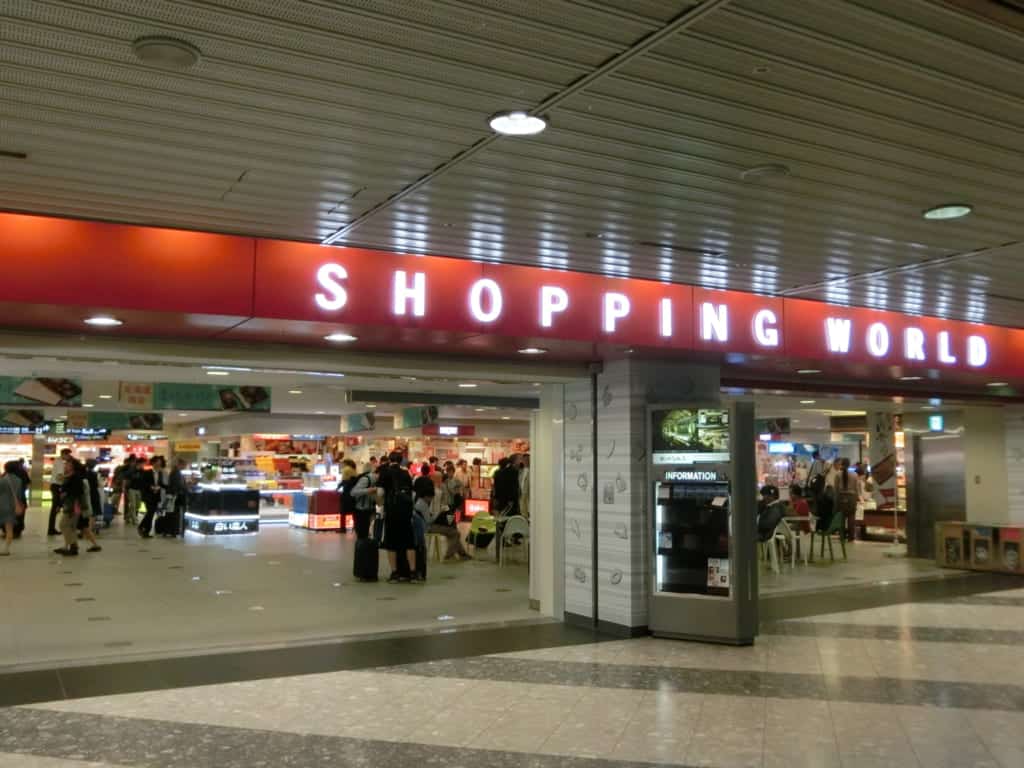
Baggage Delivery
Baggage delivery is more streamlined at New Chitose than the other airports in this list. Each terminal has two pick-up and drop-off points open until 8:00pm. These service stations are not company-specific, but instead liaise with various delivery companies that customers can choose from. Simply choose the address, fill out the appropriate paperwork, and expect to receive your bag at the correct address. Bear in mind that because Hokkaido is so large, there are narrower time constraints for deliveries because drivers have to travel longer distances.
Returning baggage to New Chitose is a matter of using the same company selected to deliver your baggage; you’ll have to deal with them directly. It may be a good idea to get appropriate contact information for this company at the time of your delivery away from the airport, and then simply contact them whenever you’re heading back to the airport, and drop-off your bags at a designated shop, to then be sent to New Chitose.
Transportation Options
There are a number of options to use when transporting from and to New Chitose, including bus, train, and the usual car rental and taxi options. Most bus routes from either terminal go to various places in Sapporo, including common tourist spots like beer gardens, or else go to several smaller cities such as Chitose (千歳) or Tomakomai (苫小牧), or prominent ski resorts.
Trains are easier to navigate to and from New Chitose than other airports. There is one line – the Chitose line – that runs from the airport, at various speeds to various cities, including Hakodate, Asahikawa, and Sapporo. As it is a JR Line, an IC Card like Suica can be used for the fare as well as your activated Japan Rail Pass.
There are also taxi and rental car options available, as well. Because Hokkaido is so large, and cities are more spread out than other areas of Japan, taxis might be prohibitively expensive. Unless you are staying in Chitose or nearby, we recommend against it. Rental cars are a great option in Hokkaido, therefore, as they allow access to areas between destinations that are otherwise difficult to reach at a much lower cost. Be sure to obtain an International Driver’s Permit (IDP) from your home country before your trip. For certain countries, you might also be eligible to drive in Japan with a Japanese translation of your license from home. Consult the Japan Automobile Federation website for more information.
Special Services Onsite
In addition to typical amenities like lounges and massage chairs, New Chitose has a few special services that make it stand out from its peers.
Its international terminal has a prayer room facility (separated into men’s and women’s), as well as a general-purpose changing room that anyone can access for free, separate from toilets. It also has a “restroom” with a bed and sink intended for people who feel ill or fatigued. The domestic terminal also has a nursing room for travelers to use to freshen up, as well as a cycling station for locking up bicycles.
Additionally, and spectacularly, New Chitose has indoor amusement parks for children – Doraemon Sky Park and Hello Kitty Happy Flight (modest entry fees apply) – located on its skyramp, an airport history museum, a movie theater with three screens and 3D capability, a full, open-air onsen (Japanese-style communal spa and bathing area), and Royce Chocolate World Factory where you can watch chocolate being made.
As you can see, Japan’s international airports are a perfect first glimpse at the convenience and efficiency of Japan. We hope this guide helps you find your way smoothly on your way, coming into and going home from Japan.

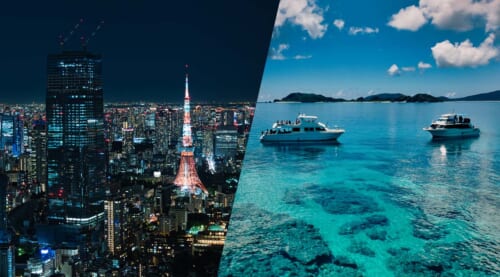

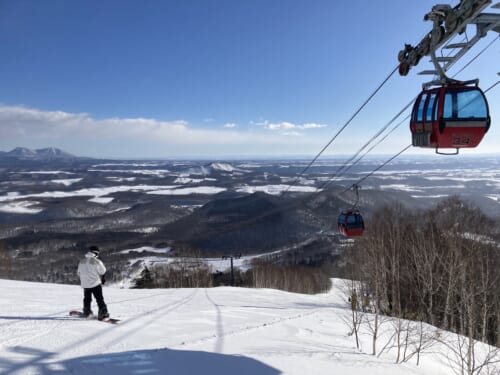
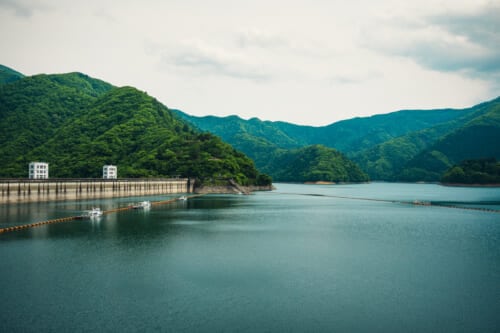
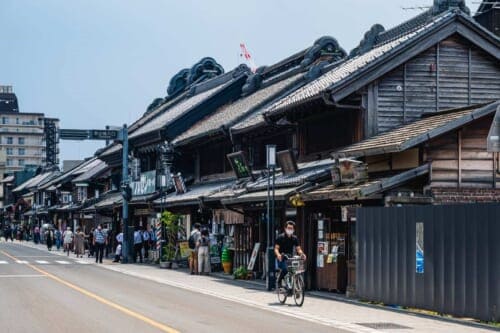



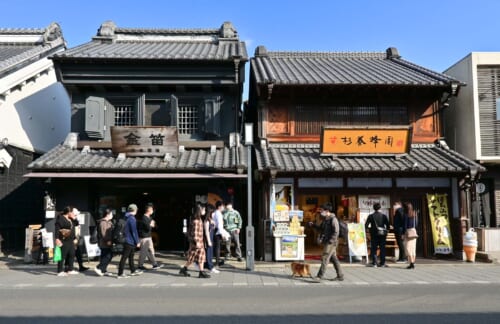
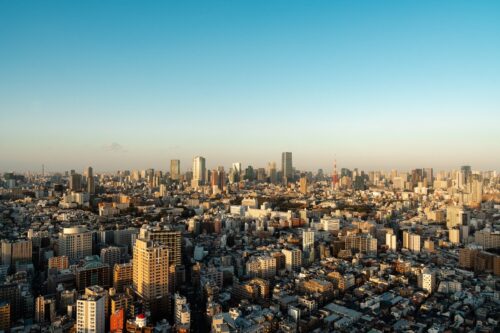


No Comments yet!